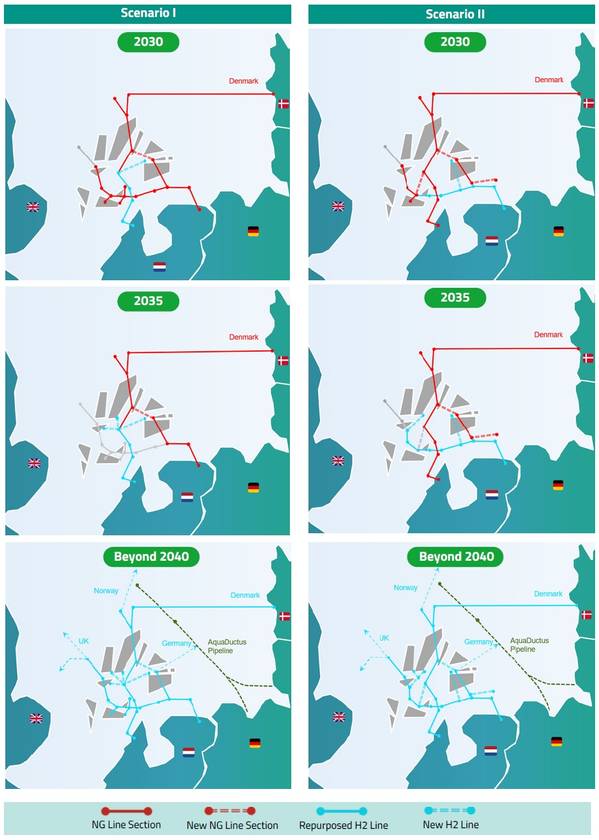
A study has shown that existing offshore gas pipelines by Dutch transport pipeline operators Noordgastransport (NGT) and NOGAT can be repurposed for hydrogen transportation before 2030, by rerouting certain gas fields while still providing transportation services for current and future Dutch offshore natural gas.
The study, by Guidehouse and Enersea, was initiated by the two pipeline operators, which operated two of the three major transport pipelines in the Dutch North Sea.
The two pipelines each have a capacity of 10 to 14 gigawatts and were certified for hydrogen transport by Bureau Veritas last year.
"The benefits of reuse over installing new pipelines are evident. It is much more cost-efficient and can be realized faster. Fewer permits are needed and the environmental impact is much lower, as the pipelines are already in place and no new ones need to be installed through vulnerable coastal areas. In addition, there is less pressure on space in the already crowded North Sea. The study analyzes the transportation of hydrogen, which will be produced in the North Sea via electrolysis of wind energy, to land. The research focused on the question of whether and within what time frame pipelines can be made available for transport," a press release published Wednesday reads.
As part of their research, Guidehouse and Enersea developed two main scenarios which can be realized before 2030.
"In both scenarios, one of the pipelines becomes fully available for hydrogen; the other pipeline continues to facilitate the transport of existing and future natural gas production. In these scenarios, blending - the blending of hydrogen with natural gas - would also be possible, in addition to pure hydrogen. The benefits of these scenarios are significant. It paves the way for the roll-out of large-scale offshore hydrogen production. Reuse has significantly lower costs compared to building a new pipeline with the same capacity. Depending on the situation, reuse can yield cost savings of up to ninety percent, compared to installing new pipelines. Another advantage is the lower environmental impact. As a result of the fact that no new pipelines need to be installed, the seabed and sensitive nature, such as dunes and the Wadden Sea, are not affected," the companies said .
"The NOGAT and NGT pipelines are well-positioned in relation to the planned large wind farms in the north, as well as for the pilot 'North of the Wadden'. To connect these wind farms, only the construction of some short new offshore pipelines is necessary, creating an -eventually redundant- network at sea. In the long term, both pipelines will be available to transport 14GW of generated hydrogen," the press release reads.
This network is already connected to Denmark - through the existing NOGAT-TYRA-DENEMARK connection - and is said to offer a good potential for connections to other North Sea countries, such as connections of the western branch of the NGT with English gas pipelines, or a connection to the German Aquaventus/Aquaductus project. Existing gas fields could eventually serve as storage, both to cope with temporary fluctuations due to wind variability and to hold strategic reserves of hydrogen.



